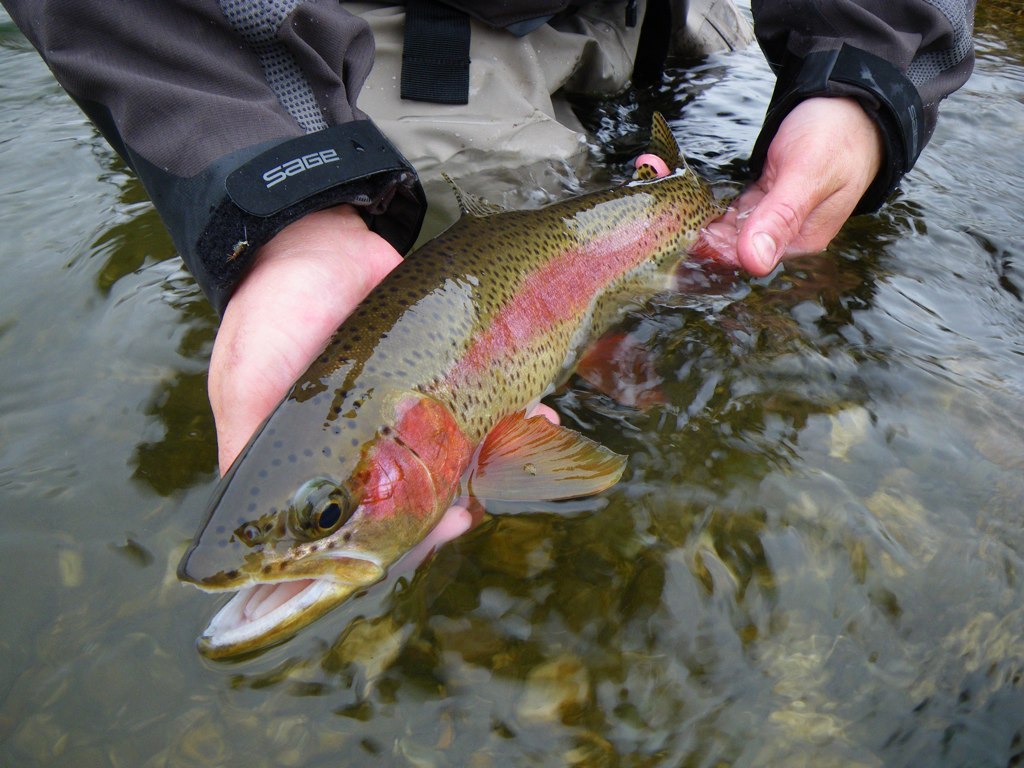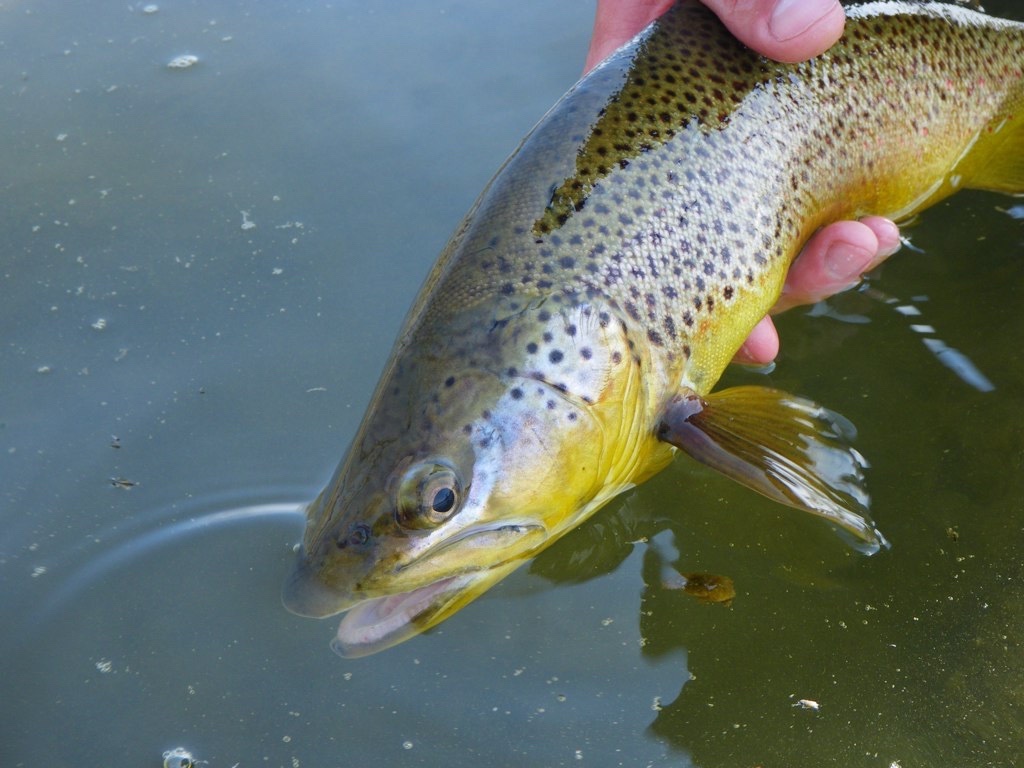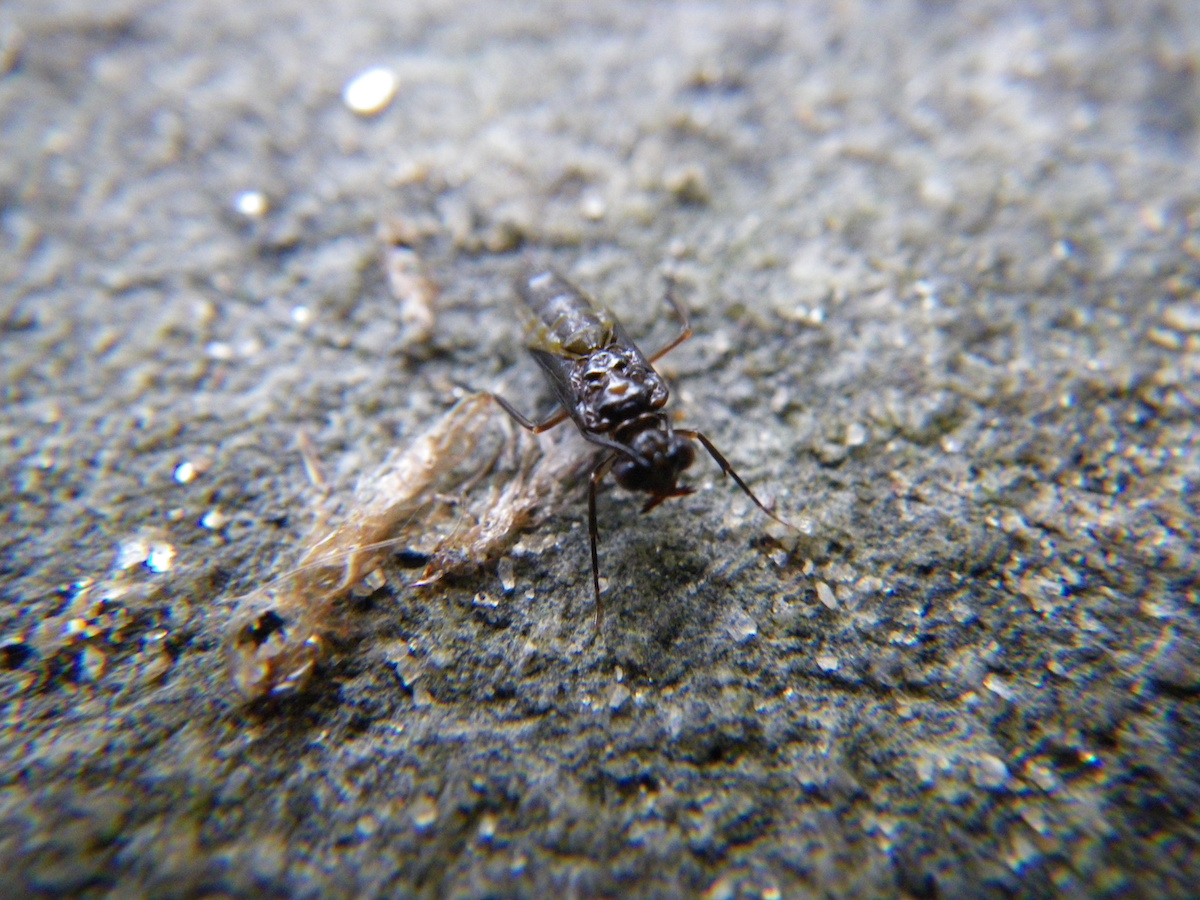This was a good post from the old blog that I felt was pertinent to our current conditions. Enjoy the read.
This fall, we have experienced what is usually the norm for northeastern river conditions. Low, skeleton like boulder strewn rivers that are a fraction of their normal capacity, exposing areas that are typically under water. These types of conditions can make for difficult and often wary fish.
No matter what your preferred method of angling may be; dry flies, nymphs, wets or even streamers, stealth and a planned approach to the water are paramount for success. Even though the insects of fall heading into winter may be a mere fraction of the size of their cousins of spring and summer, fish can still be had on larger fare if you know how to target the correct water. Here are a few tips that should help in tipping the odds in your favor whenever you are faced with low clear conditions in the fall.
1. Wear Drab Clothing:
Whenever fishing I often try my best to wear clothing that closely matches the foliage that I may encounter. In the fall, once the leaves are stripped from the trees, a majority of the trees and bushes on my home waters are often a shade of gray to olive. Wearing muted earth tones are often beneficial and can help you maintain a stealthy approach, especially if you walk slowly and do your best to blend in with the foliage that lines the banks. I am a big advocate of the river camo line of clothing by Aqua Designs, in fact many of you may have seen pictures of me wearing a few of their shirts throughout the season. You may not have to go that far, but if it helps you blend into your surroundings, it is more often than not a helping hand. Remember, a trouts vision is reflected in a cone as a result of the waters surface and their window of vision is much greater than just overhead. Some models depict that the blind spot for a trout at 6 meters from their position is roughly 1 meter high. So in theory if you are 6 feet tall, than just less than half of your upper body is visible to the fish. Remember, that is only applicable if you are standing on ground that is equal to the surface of the water. More often than not, the banks of the river are higher in respect to the surface of the water so in theory even at a distance of 6 meters your entire body may very well be visible to the trout.
2. Stay Out Of The Water:
This may not be feasible on all watersheds, but if at all possible try your best to stay out of the water under low water conditions. Trout can sense the erratic motion of injured prey as a result of their lateral line. What they can also sense with their lateral line is the movement of something that could be perceived as a threat to their well being. If you are an aggressive wader, you might want to work on your footwork as errant steps or pushing wakes will most likely alert the fish in the stretch of water you intend to fish. It doesn't take much to send giant vibrations through a soft pool of water, and remember, they travel like sound waves for fish. This may be more detrimental to those who are targeting surface feeding trout, but I will take it a step further and surmise that it can adversely effect trout feeding in a variety of ways under low conditions. Remember, when the river is a fraction of its normal capacity, the volume of water is greatly reduced and the areas that hold fish may very well be one quarter to one half their normal depth. In short, whenever possible, stay out of the water, or wade cautiously and methodically.

3. Ditch The Spikes:
To build upon the last paragraph, do yourself a favor and drop the spikes out of your wading boots. Now I know, by doing so you will drastically reduce your ability to safely traverse the stream bed, and maybe cause yourself to take a swim or roll an ankle. If you've adopted the concepts in the last paragraph, you will be forced to wade much more methodically with the lack of spikes on your boots. Remember, sound underwater is magnified, think about the times you slapped a pair of rocks together underwater while swimming as a kid and how much sharper and louder that sound was as opposed to doing the same on the beach. Think how far those grinding sounds of your tungsten spikes are traveling under water every time you step on a rock. In many cases you are most likely not only alerting every fish in the pool you are stepping into, but also those that inhabit the water in the adjacent runs up or down river. Where ever regulations allow, I will wear straight felt bottomed soles, as they will provide much less noise underwater. Rubber soled boots are equally as effective, but are exponentially more difficult to wade a river that is made up of rocks.
4. Fish From A Downstream Position:
Like #2, this too may not always be a feasible option, but whenever possible I try my best to approach and fish a section of water from a downstream position. Unless presented with a swirling back eddy, fish in a river will be positioned facing upstream into the current as it is the path by which food will be presented to them. The cone of vision for a trout is drastically reduced towards their tail as they have eyes that are positioned on the sides of their head unlike some other species of fish. In theory, you can actually get much closer to a trout when approaching from the rear, especially if you heed the tips laid out above. Granted, this may not always be the case, and is only as true as the level of conditioning that your rivers fish might have to anglers. There are a slew of other variables that come into play, a few off the top of my head are whether your river is primarily a stocked or wild fishery for starters. Wild fish are less tolerable of anglers then those raised in a hatchery in general, allowing you less room for error. Fishing from a downstream position may require more precise and well placed presentations, so concentrating on presenting your patterns with finesse will usually equate to a greater level of success, especially if you are fishing to surface feeding trout. Nothing trumps presentation in my book, and if you up your game by working on presenting your flies with precision and efficiency, your overall game will benefit in the long run.
5. Drop Your Tippet Size:
I am of the school of thought that presentation is far more paramount to fishing success than fishing lighter tippet, but under low, clear water conditions this mentality is moot. Always fish the heaviest tippet that will allow you to catch fish. When the water is lower, that may very well be a size of tippet smaller than what you are accustomed to. Typically, I find that one size smaller than my norm will suffice and get me back catching fish again. If my tippet size under normal conditions for surface oriented fish is 5x, then I will drop it down to 6x under lower conditions. If the insects are smaller which they often are in the fall, then I may go a step further. Fluorocarbon is another option that can help as well, and I am a strong advocate of its use when fishing nymphs or wet flies. I will typically shy away from fluorocarbon when fishing dry flies, but in times of lower water it can sometimes be a difference maker.

I hope these simple tips are beneficial to some of you this fall, and remember, they not only apply to fall conditions, but whenever the rivers are lower than normal. Like most of my posts, just add water and enjoy your time out there this fall.
-RS-


